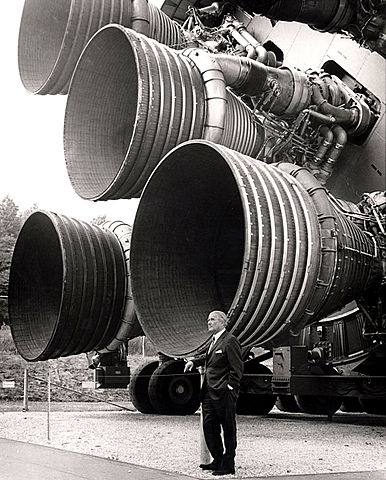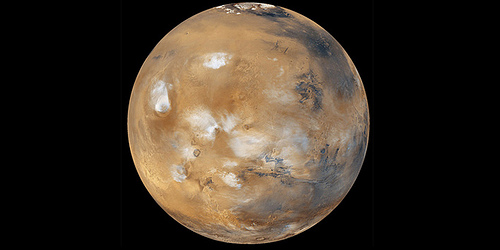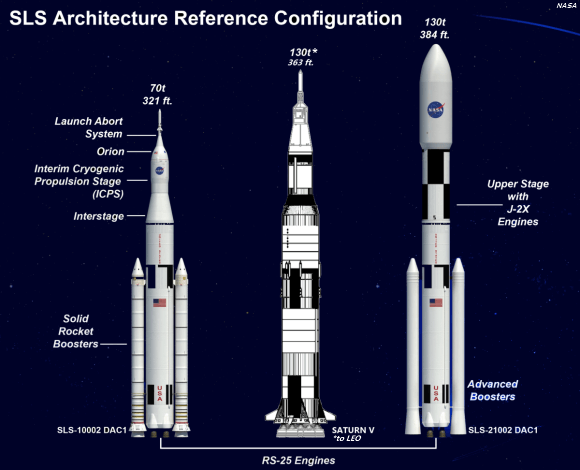Space: The Final Frontier
When we look up into the night sky, we become mesmerized by the immensity of the cosmos. It is something bigger than any one human, bigger than our species & all life on our home world. I often talk about it on this blog.
Today, I am taking it further to a discussion on where we are as a species and our long-term vision of space. Since there is much to discuss and think about, I will split this into 2 separate parts (2nd part will go up next week).
First part will focus on the space race of yesteryear and the implications of journey to Mars. Second part will focus on the current biggest barriers of Mars travel/exploration and our long-term vision of space beyond Mars.
Introduction
“The Cosmos extends, for all practical purposes, forever. After a brief sedentary hiatus, we are resuming our ancient nomadic way of life. Our remote descendants, safely arrayed on many worlds through the Solar System and beyond, will be unified by their common heritage, by their regard for their home planet, and by the knowledge that, whatever other life may be, the only humans in all the Universe come from Earth.
They will gaze up and strain to find the blue dot in their skies. They will love it no less for its obscurity and fragility. They will marvel at how vulnerable the repository of all our potential once was, how perilous our infancy, how humble our beginnings, how many rivers we had to cross before we found our way.”
-Carl Sagan (Pale Blue Dot, 1994)
At the core, we are dreamers. We are thinkers. We are birds soaring the skies exploring our surroundings, searching for answers as we blast our way through the clouds of unknown and drift above the vast endless ocean of space.
We have always been explorers and voyagers going back to the days of early humans. We drifted continuously from continent to continent trying to survive, to quench our curiosity, and our search for answers. We have never stood still throughout the 3 million years humans have existed (including human species before our current species homo sapiens, who have been around for about 100,000 years). We began primarily on foot to makeshift barges to boats to horses to ships to horse-buggies to trains to cars to planes to rockets. We have been searching for anything and everything. We are ambitious beings trying to reach for the stars (both literally and metaphorically).
During all that time, there has been one mystery that we have never truly grasped and a thirst we may never truly quench: the mystery of space. For over the last 2 million years, humans have looked up into the night sky with mesmerization and questions of what is out there. We were drawn by the unknown. Perhaps we felt space was the path to salvation and light at the end of the tunnel. In a sense, space and the unknown out there helped us overcome our fears with feel-good inspiring stories using our imagination and great mythologies told of concepts such as heaven, hell, reincarnation, religious tales, and narratives to provide us hope.
There was also a great sense of fear. Fear of fierce thunderous strikes from gods in anger and rage. The horrors of seeing comets, which were seen as bad omens. Eclipses were also feared and seen as punishments from god. The ancients felt the cosmos were made for us only and thought the universe revolved around the Earth. Many superstitions were invented -many still used today such as astrology- in an attempt to place humans on a level of special importance with the stars, which we once thought moved at the whims of our fingertips (we now know it is due to gravity and laws of motion). Many rituals were formed by the ancients in an attempt to “control” the cosmos.
Some cultures felt stars were distant candles lit up for humans, some felt stars were holes in the sky. Some felt planets were gods looking out for humans, some felt they were made from certain elements (Mars from fire -fire was considered an element in ancient times-, Venus from gold, etc). Throughout human history, there were many such ideas, thoughts, fears, superstitions, and imagination of space. Unfortunately, there were no answers as telescopes didn’t exist until 17th century so everything was fair game until that moment when we could gaze the skies.
First human-made object didn’t enter outer space until the Nazi V2 rocket during WW2. It was only 55 years ago in 1961 that the first human, Russian Yuri Gagarin, entered outer space. It was 4 decades ago that Americans Neil Armstrong and Buzz Aldrin landed on another world. If we put that into perspective versus how long humans have been around on Earth (estimating 2.5 million years), it would be no more than 1.56 seconds ago out of 24 hours. We have just begun our quest, and we have a long road ahead of us.
This reminds me of theme song of Star Trek Enterprise, which expresses these very sentiments.
“Its been a long road getting from there to here. It’s been a long time but my time is finally near, and I will see my dream come alive at last. I will touch the sky and they’re not gonna hold me down no more.” That is the glimmering glory we seek in the vast dark endless velvet of space.
Space Race
It was early 1940’s in Germany. A Nazi scientist by the name of Wernher von Braun was busy at work under direct orders from Adolph Hitler to engineer a rocket that could be manufactured and launched directly from Germany to United Kingdom. The goal of the rockets was to obliterate UK. Nazi Germany’s resources were allotted to von Braun for destruction and death from long-range, which was unheard of back then. Within 2 years he had a working prototype, which Hitler was so impressed by once he saw it in action that he instantly promoted von Braun.
The Allies initially did not take V2 rockets seriously until summer of 1943 — von Braun had designed something that the Allies couldn’t even fathom. Nazi classified videos and documents were not seen until after WW2. After WW2 ended, the US Army was very impressed by the V2 rockets that they brought a few home to America to test because it was beyond anything the Americans had in their arsenal at the time (or any other country for that matter).
V2 rocket blueprints. von Braun was ahead of his time by at least 2 decades. Rockets today may be slightly more complex but the same physics apply from top to bottom:
By 1944, von Braun’s V2 rockets were killing hundreds of people weekly as they would smash into crowded London. There was no warning or time to escape as the rockets would hurl towards human trajectory at supersonic speeds beyond the sound barrier from outer space. Von Braun afterwards famously said “the rockets worked perfectly, except for landing on the wrong planet.” The curtain of space had suddenly flicked open, and that was the opening act of the space race.
After the fall of the Nazi regime, von Braun defected to the USA. He could have easily defected to the Soviets and Soviets would have been the ones to land a man on the moon, but he chose America. US State Department officially expunged from war records his Nazi days because they knew von Braun would be instrumental in skyrocketing America to the top (politically and new records-wise, von Braun never worked for the Nazis on paper even though realistically he did). As an aeronautics engineer/scientist working for the US Army, he initially worked on developing small rockets and laser-guided missiles until he could gain their trust. He couldn’t quite do what he wanted to do, which was to build rockets to explore space for science. It all changed in 1958 thanks to a brand new agency.
National Aeronautics and Space Administration (NASA) was established in 1958. Within two years, NASA’s brand new high-tech Marshall Space Flight Center was quickly built, and the Pentagon made ex-Nazi rocket scientist Wernher von Braun the director. At the time, NASA had a blank check to innovate and spend whatever they wanted for space program. Congress, Pentagon, President Kennedy were all willing to give NASA whatever resources they needed to beat the Soviets as the Cold War was brewing.
Although the Soviets beat America into space by one measly month, the next feat was so great that no nation has come close to touching America: designing a rocket that was to take & land humans on the moon. Not once but 6 times in 4 years! It was von Braun and his team of NASA scientists/engineers that accomplished that feat with the famous Saturn V rocket, the largest and most powerful rocket built in history.
Here’s an image of von Braun in front of his Saturn 5 rocket engines (the rocket is so massive that you can’t see the 5th engine on top right corner!)
Once the Soviets were beat to the moon, NASA’s budget was massively slashed overnight in the 1970’s. US Congress and US Government felt there was no strategic reason to return to the moon or go beyond. They couldn’t politically justify it because the reason for moon landing was never truly science-based. It was politically driven to beat the Soviets with massive military implications — politics usually tends to be driven by fear and military complex tends to be driven by paranoia so they all go together (science would neither be fueled by fear nor paranoia!). USA had already whooped the Soviets in almost every major category so the fear of the Soviets winning was slowly evaporating in the 1970s. The moon landing was arguably the beginning of the end of the Cold War and perhaps the only positive thing that came out of the Cold War.
That is where journey to Mars would differ.
Journey to Mars
Whereas the moon landings were all about topping the Soviets and little about science, Mars is distant enough that there would be fewer military/political reasons for landing there as it would have to be driven by scientific and engineering reasons. Sure, you can build a military base on Mars, but we are not technologically or logistically there yet with the capability to build a base on Mars. There is also not much strategic reason for any individual nation to build a long-term military base there (for now).
There are also fewer political reasons for going to Mars because the cost would be so great that an individual nation may not willing to spend for it on their own. Even if they could, it would be difficult for them to gather enough political support for it in the somewhat anti-science climate we live in. A small team of astronauts and researchers visiting with a conjunction of private/public funds is a different story.
There would be major implications including scientific, social, technological, and historical.
-First, it would be an inspiring and uniting moment for humanity much like the moon landings were. History books have documented how people were glued to their TVs and radios during the previous moon landings. There was a sense of unity in those moments. We humans need such a moment in current times of turmoil from depressing issues like climate change, poverty, and destruction globally by terrorist organizations. We already saw how excited people globally were when most recently we zoomed past Pluto. We need more moments like those. Landing on Mars would be the greatest of these moments.
-Second, we can progress technology and engineering because the journey would require ingenuity and engineering. Many new technologies would need to be invented to successfully make the journey, and these technologies would expand to other industries. We might create new tools or software that would help in other areas or other issues as well.
-Third, we would learn new things from such a great new endeavor. We would come across new issues not yet thought of and new solutions to previous problems not thought of yet. We would make new mistakes not made yet – it is better to make a new type of mistake during preparation and learn from it than never to make a mistake. We can add new data to our knowledge and understanding of the cosmos.
-Fourth, we would be able to fulfill curiosity of questions we had before. Is there bacterial life on Mars? What is the weather like on mars? Maybe it could help devise markers of how life came to be on earth. Is there free flowing water underground? How well can we colonize Mars in the future? What resources and wealth are there on Mars for future colonization? Maybe metals or radioactive substances for nuclear fission? Is it readily available or would we need to drill down deep? Was there life on Mars once? How did it die out and what can we learn from it? If life was in danger on Earth, could we safely move to Mars? Many other questions which I will not get into here.
-Fifth, it would be a joyful event in our history. On complexity alone, it would be greater than anything done by Christopher Columbus or Magellan (Magellan died during the trip, but his crew was the first to traverse the globe) or Marco Polo (opened up trade route between Europe/Eastern Asia) or any other explorer in human history. It would be seen as the defining moment of humanity for all of time.
Here’s an awesome argument by an actual NASA-affiliated aeronautics engineer Robert Zubrin, who goes into arguments beyond anything I could articulate.. He points out that nobody in 500 years will remember which faction won what in Iraq or Syria. What people will remember are the great feats such as landing on Mars, which everybody in 500 years will remember.
Nobody will remember ISIS or what celebrities like the Kardashians are doing or the other plethora of worthless topics people sit around discussing. Dr Zubrin says (paraphrasing) the humans in 500 years will remember what we did today to make THEIR civilization possible tomorrow. That is why if we have the power to do something great, we should. Powerful argument he puts up.
As much as I am gung-ho about astrophysics and how much journey to Mars would inspire us, there are simply so many other things to consider before we could realistically get humans on mars. Next time, I will blog about the barriers of such a journey and where does NASA currently stand on their latest rocket they are currently building called Space Launch System (SLS), which is even bigger, more powerful, and more efficient than the massive Saturn V. More next time.
- My Favorite Books - February 7, 2024
- Review of Carl Sagan’s The Demon-Haunted World - January 31, 2024
- The 75 Greatest Films of All Time - December 22, 2023








